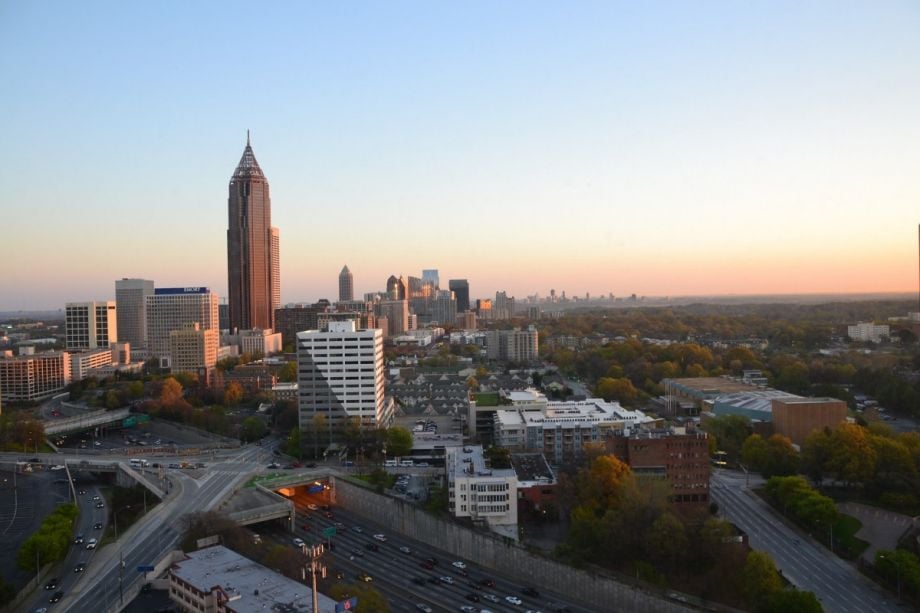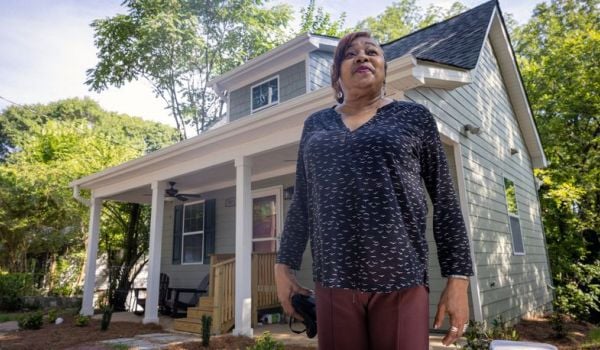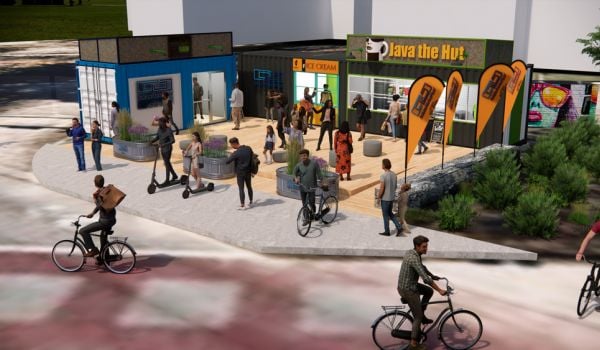Atlanta is projecting astronomical growth over the next 20 years, and the city has a new book intended to guide population growth by considering everything from affordable housing to traffic congestion.
Atlanta City Design, unveiled earlier this month, is meant to inform and shape all of Atlanta’s various plans, codes and ordinances. The document is not a plan itself, but “a strategic realignment of existing plans” that seeks to lock some core city-building principles into everything Atlanta does.
“The growth that’s projected here in the urban core of the region is staggering, and not changing is not really an option, as we say in the book,” says Ryan Gravel, who worked on the guide and is well-known for conceiving the Atlanta BeltLine, a 22-mile trail connecting remote neighborhoods in the path of a decommissioned railway line. “The idea is to design the change so that it happens in our best interest.”
Atlanta City Design assumes that the metro area will grow from a population of around 5.5 million to 8 million in the next two decades, and that the city itself will more than double in size to around 1.2 million. The document embraces that growth, foregrounding design as the tool to make sure the influx of people to the city is more beneficial than destructive. Equity is the overriding goal, and the guide is built around the idea of the “Beloved Community,” discussed by Martin Luther King Jr. in a 1957 sermon called the Birth of a New Nation.
“The civil rights movement is the thing that set Atlanta apart from other cities in the South, that made it open and palatable to international and national investment, changed its trajectory and made it what it is,” Gravel says. “All the prosperity we enjoy today is built on the back of that movement and so we have an obligation to live up to its promise.”
The five values highlighted in the book — nature, access, ambition, progress and equity — reflect many of the efforts that cities across the world are struggling with today. How do we embrace and protect the natural aspects of the urban environment? How do people move around a landscape marked by gridlocked highways? How does a city welcome newcomers while looking out for the interests of marginalized communities? How do we fight poverty and build racial equity?
To address these issues, the book points to specific policy solutions, like rezoning and adjusting prices to discourage parking congestion, inviting extra-dense development near transit nodes, experimenting with housing design for affordability, protecting some established neighborhoods, building new parks, “re-wilding” parts of the Chattahoochee River waterfront, and investing in bus rapid transit.
The book also contains a section on designing for “legibility.” Early development patterns in Atlanta actually do follow a hub-and-spoke design and the natural contours of the landscape, Gravel says, but more recent developments have made the environment harder to read.
“Most people here orient themselves, where they are in the city, relative to the highways,” Gravel says. “What it means is that you don’t understand how the city is built. The physical form doesn’t make any sense. When you take away the highways you start to see why the city exists.”
This isn’t the first time that city planners have put a bunch of aspirational ideas in one place — time has proven them wrong before — but Atlanta City Design is remarkable for the confidence of its vision and its belief in the projected growth of the region. It’s confident in its characterization of Atlanta’s civic identity. And it’s confident in its faith that design can create a more just and accessible city.
Gravel, who quit the board of the Atlanta BeltLine Partnership last year over concerns that it wasn’t taking equity seriously enough, is committed to the ideas in Atlanta City Design. Will city leaders take it seriously?
Atlanta is in the homestretch of an election for a new mayor and new city council members, and Darin Givens, a co-founder of the urbanist group ThreadATL, says that a handful of candidates seem to be embracing the ideas in the City Design book. For a long time Atlanta has been built around an “anti-planning ethos,” Givens says, but efforts like Atlanta City Design are slowly convincing people to embrace growth and the planning policies that can help shape it. Still, Givens sees a tough road ahead for some of the ideas in the book, like increasing the price of parking. And as far as equitable development is concerned, he says it’s past time to do something about it. Atlanta City Design includes suggestions like incentivizing and subsidizing more affordable housing and expanding a housing trust fund, along with encouraging the development of more low-cost designs.
“The BeltLine has been in development for many years now,” Givens says. “These measures would have been very, very helpful 10 years ago. There’s probably some displacement that’s already happened.”
Gravel says that rents and property taxes in Atlanta are still somewhat behind the national curve, which means there’s time to do something about equity before housing is out of reach for the poor. (In April, the city established an anti-displacement grant fund in partnership with a local nonprofit.) He acknowledges that protecting affordability will be among the most difficult parts of the vision, along with chipping away at Atlanta’s car culture. But without a unifying vision built on equity, he says, there’s little hope that the city can handle its growth responsibly.
“The role of design is really clear,” he says. “The lesson from the BeltLine in terms of what’s happening now is, you do have to follow through on all those policies.”

Jared Brey is Next City's housing correspondent, based in Philadelphia. He is a former staff writer at Philadelphia magazine and PlanPhilly, and his work has appeared in Columbia Journalism Review, Landscape Architecture Magazine, U.S. News & World Report, Philadelphia Weekly, and other publications.
Follow Jared .(JavaScript must be enabled to view this email address)



_600_350_80_s_c1.jpg)












